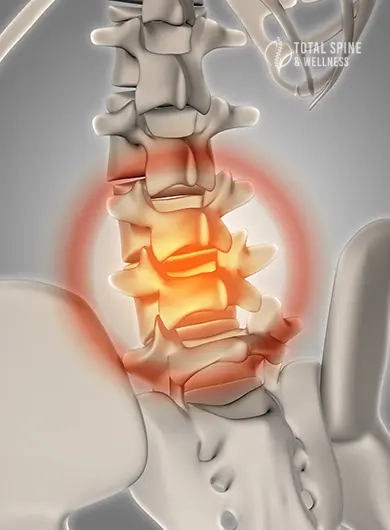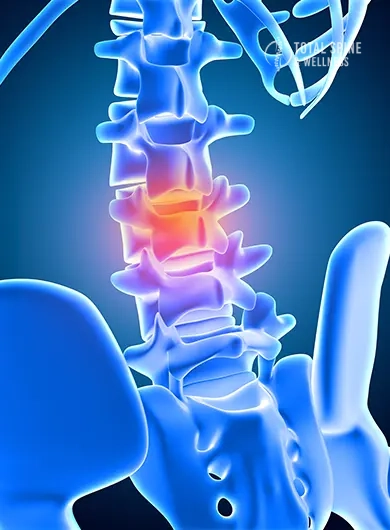Endoscopic Spine Surgery: A Minimally Invasive Solution for Back Pain
Our Team
We are a team of highly specialized spine surgeons dedicated to pioneering the future of spine care.
Share:
Table Of Contents
- What Is Endoscopic Spine Surgery?endoscopic discectomy
- Conditions Treated with Endoscopic Spine Surgery
- Benefits of Endoscopic Surgery
- What to Expect During the Procedure
- Is Endoscopic Spine Surgery Right for You?
- Related Treatments Offered at Total Spine Wellness
- Real Patient Outcomes & Success Stories
- Advanced Technologies at Total Spine Wellnessspinal nerve pressure
- Leading Technologies & Equipment in Endoscopic Spine Surgery
- Alternatives to Endoscopic Spine Surgery
- Preparing for Endoscopic Spine Surgery: What to Know
- FAQs- Frequently Asked Questions About Endoscopic Spine Surgery
Endoscopic Spine Surgery is reshaping the landscape of back pain treatment. As a cutting-edge approach within minimally invasive spine surgery, this procedure uses a small incision and advanced imaging to relieve spinal nerve pressure with minimal disruption. At Total Spine Wellness, we believe in empowering patients with knowledge, so you can make an informed decision about whether this innovative technique is the right solution for you.
In this in-depth guide, you’ll learn everything about Endoscopic Spine Surgery: how it works, who it’s for, its benefits over traditional surgery, and how it compares with other regenerative medicine treatments like Disc Regeneration, Stem Cell Therapy, and PRP Therapy.
What Is Endoscopic Spine Surgery?endoscopic discectomy
spinal decompression
Endoscopic Spine Surgery is a form of minimally invasive spine surgery that uses a high-definition camera (endoscope) inserted through a small incision—typically less than 1 cm—to access and treat spinal pathologies. Unlike traditional open surgery, which requires large incisions and extensive muscle dissection, endoscopic techniques preserve healthy tissue and offer quicker recovery.
Difference Between Endoscopic vs. Traditional Spine Surgery
- Endoscopic Surgery: Small incision, camera-guided, same-day outpatient procedure
- Traditional Surgery: Larger incision, longer hospitalization, and extended recovery
With small incision spine surgery, patients experience reduced blood loss, less postoperative pain, and minimal scarring.
Tools and Imaging Technology Involved
- HD Endoscope with real-time visuals
- Fluoroscopy for accurate targeting
- Precision micro-instruments for nerve decompression
This procedure often involves biportal endoscopic spine surgery, allowing surgeons to visualize and treat the area with two working channels simultaneously.
Conditions Treated with Endoscopic Spine Surgery
If you’re dealing with chronic back pain, Endoscopic Spine Surgery might be the answer. It is frequently used for:herniated disc treatment
- Herniated Disc Treatment
- Spinal Decompression for stenosis
- Degenerative Disc Disease
- Foraminal Narrowing (nerve canal narrowing)
Many of these conditions previously required traditional surgery—but now, thanks to outpatient spine procedures, patients can often go home the same day.
Benefits of Endoscopic Surgery
The benefits of Endoscopic Spine Surgery over traditional methods are significant:
- Smaller Incisions – Less trauma to muscles and tissue
- Reduced Blood Loss – Safer for older adults and complex cases
- Less Postoperative Pain – Less need for opioidsnerve decompression
- Faster Recovery Spine Surgery – Return to daily life in days or weeks instead of months
- Outpatient Spine Procedure – Same-day discharge in most cases
These benefits align with the goals of regenerative medicine treatments—to heal, not just manage symptoms.
What to Expect During the Procedure
Understanding what happens before, during, and after Endoscopic Spine Surgery helps reduce anxiety and improve outcomes.
Pre-Surgery Preparation
- Detailed spinal imaging (MRI/CT)
- Consultation to determine if you’re a good candidate
- Pre-anesthesia instructions
Procedure Steps
- A small incision was made near the problem disc
- An endoscope is inserted to visualize the area
- Specialized instruments remove herniated disc material or decompress nerves
- Closure without stitches in many cases
Recovery Timeline and Aftercare
- Walk the same day in most cases
- Resume light activities in 1–2 weeks
- Return to work in 2–4 weeks
- Full physical therapy plan included
Total Spine Wellness coordinates rehab after surgery as part of our spine and joint pain treatment services.
Is Endoscopic Spine Surgery Right for You?

You’re likely a candidate for Endoscopic Spine Surgery if:
- You have chronic pain from degenerative disc disease
- You’ve tried conservative treatments (physical therapy, injections)
- You have confirmed a herniated disc or spinal stenosis
When should someone choose this vs. other treatments?
- Choose surgery when pain impacts quality of life and other methods fail
- Consider conservative regenerative medicine options first, such as:
Total Spine Wellness offers both surgical and non-surgical options, ensuring you find the right path for your body.
Related Treatments Offered at Total Spine Wellness
We offer several orthobiologic injections and cellular therapy options alongside Endoscopic Spine Surgery:
- PRP Therapy: Platelet-rich plasma for pain relief and tissue repair.
- Exosome Therapy: Powerful anti-inflammatory signals derived from MSCs.
These options provide alternatives for patients not ready for surgery or as complementary approaches.
Real Patient Outcomes & Success Stories

Our patients report dramatic improvements in mobility, pain reduction, and life quality. Some examples:
- John, 58, avoided traditional surgery and returned to work in 3 weeks after a minimally biportal endoscopic spine surgery
- invasive spine surgery.
- Lisa, 43, combined Disc Regeneration and endoscopic discectomy for long-term relief from degenerative disc disease.
- Kevin, a former athlete, opted for endoscopic nerve decompression and resumed workouts in just 5 weeks.
Advanced Technologies at Total Spine Wellnessspinal nerve pressure

We use next-generation surgical tools and biologics:
- High-def endoscopic systems
- Intraoperative neuromonitoring for nerve safety
- Autologous biologic integration – pairing surgery with your body’s healing factors
This synergy of science and care ensures safer procedures with optimized healing
Leading Technologies & Equipment in Endoscopic Spine Surgery
Modern endoscopic spine surgery relies heavily on advanced platforms and imaging tools that enhance precision, safety, and outcomes.
Modern Endoscopic Platforms
Leading brands like Joimax, RIWOspine, and Unintech deliver high-definition visualization for nerve decompression and tissue removal. These tools allow surgeons to work through minimally invasive spine surgery techniques with unparalleled accuracy and minimal disruption to surrounding tissues.
Intraoperative Imaging & Navigation Tools
Techniques such as fluoroscopy, real-time 4K endoscope cameras, and intraoperative navigation (even limited robotic assistance) help reduce radiation exposure while improving targeting precision. This equipment supports safer procedures and optimal spinal nerve pressure relief—all through small, ultra-careful movements.
Alternatives to Endoscopic Spine Surgery
While endoscopic discectomy is a popular outpatient spine procedure, understanding alternatives helps patients make informed decisions.
Microdiscectomy vs. Endoscopic Discectomy
Microdiscectomy is a common minimally invasive option for herniated disc treatment, but it still requires slightly larger incisions and muscle manipulation. In contrast, endoscopic discectomy uses smaller incisions and camera guidance for faster recovery and less postoperative pain.
Endoscopic Rhizotomy & Laser Ablation
For spinal stenosis or chronic facet joint pain, alternatives such as endoscopic rhizotomy or laser ablation focus on nerve pathway disruption and pain relief. These techniques can serve as non-fusion options for patients seeking alternatives to traditional decompression.
Artificial Disc Replacement & Motion-Preserving Solutions
In cases of severe degenerative disc disease, procedures like artificial disc replacement or motion-preserving systems (e.g., TOPS) offer long-term stability without fusion. Though more invasive than endoscopic methods, they present viable options for multi-level disease.
Preparing for Endoscopic Spine Surgery: What to Know


Patient preparation plays a crucial role in minimizing complications and optimizing outcomes.
Preoperative Instructions & Imaging Requirements
- Complete MRI/CT scans to map the surgical area
- Stop blood thinners (e.g., aspirin, NSAIDs) 7–10 days prior
- Follow fasting guidelines before surgery
- Discuss any coexisting conditions to ensure a safe outpatient spine procedure
What to Bring on Surgery Day
- Loose, comfortable clothing
- List of current medications
- Imaging CDs (MRI/CT) for surgical planning
- Someone to drive you home—usually needed after sedation
A well-prepared patient often experiences smoother nerve decompression and a faster recovery from spine surgery outcomes.


FAQs- Frequently Asked Questions About Endoscopic Spine Surgery
1. What is Endoscopic Spine Surgery?
Endoscopic spine surgery is a minimally invasive technique that uses a tiny HD camera (endoscope) inserted through a small incision (4–10 mm) to access and treat spinal conditions. It preserves muscles and reduces tissue damage compared to traditional open surgery
2. What conditions can be treated with endoscopic spine surgery?
This procedure is commonly used for herniated discs, spinal stenosis, foraminal narrowing, disc degeneration, sciatica, pinched nerves, and some spinal tumors
3. How does recovery time compare to open spine surgery?
Patients often walk the same day, resume light activities within 1–2 weeks, and return to full everyday function in 4–6 weeks, significantly faster than traditional surgeries that require months of healing
4. Is endoscopic spine surgery painful?
Most patients experience only mild discomfort. Since the surgery preserves muscles and tissue, postoperative pain is considerably less than open procedures
5. Will I have a scar after endoscopic surgery?
Yes, but it’s minimal. Incisions are about 7 mm—less than half the size of a dime—leaving only a small, minimally visible scar
6. How long will I stay in the hospital after endoscopic spine surgery?
Most procedures are outpatient, meaning you can go home the same day. In rare cases with more complex conditions, an overnight stay may be recommended
7. What is the success rate of endoscopic spine surgery?
Success rates range from 85–95% for appropriate candidates, with outcomes comparable to open surgery but with fewer complications
8. How is endoscopic spine surgery different from other minimally invasive procedures?
Unlike microdiscectomy or laser ablation, endoscopic surgery uses real-time video visualization and micro-instruments through small portals, providing precise decompression with minimal tissue disruption
9. Who is a good candidate for endoscopic spine surgery?
Ideal candidates have localized pain from herniated discs, spinal stenosis, foraminal narrowing, or sciatica, and have not responded to conservative treatments
10. What should I expect during recovery and aftercare?
Expect light activity within 24 hours, avoid heavy lifting for 4–6 weeks, and resume work gradually. Follow-up appointments with imaging and a tailored physical therapy plan are essential
Ready to Take the First Step?
You don’t have to live with back pain — and you don’t have to face surgery to fix it. At Total Spine Wellness, we offer safe, effective, and research-backed disc regeneration therapies tailored to your needs.
Call us or click below to schedule your personal consultation and find out if regenerative disc therapy is right for you.

